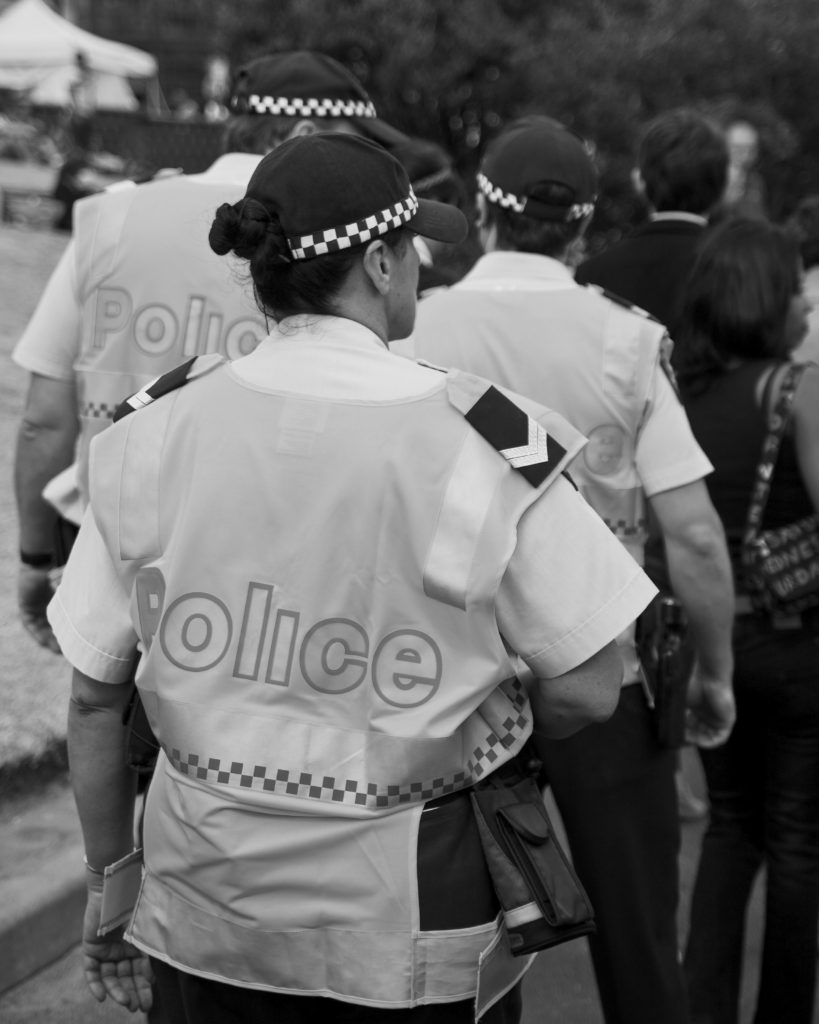VELDA CITY • About the time Keisha Redding printed her résumé at a state job assistance center, a police patrolman a mile south noticed a red Chevrolet Monte Carlo with no front license plate. After the driver made two turns without signaling, the officer switched on his lights and siren.
The red sedan with a white hood raced away, covering the distance in the time it took Redding, 23, headed for a job interview, to start walking across Natural Bridge and Lucas and Hunt roads. The crosswalk signal was in her favor, but the circumstances were not.
It was just before 11 a.m. Feb. 26 when the Monte Carlo struck Redding, killing her instantly, and kept going. It was found later, abandoned, in St. Louis. Four days after that, prosecutors filed involuntary manslaughter and leaving the scene charges againstMikal Hamilton, 24. It took police about a month more to find him.
Redding’s mother, Njoki Redding, has compassion for Hamilton and his family, recognizing that he did not intend to kill anyone. And she raises the question of whether low-stakes police pursuits make sense.
“He made a terrible mistake, and yes, there needs to be atonement for that mistake, but in that, we need to stop continuing to damage the community,” she said in a recent interview. “Responsibility needs to be taken for things that may have been incorrect as well as looked at in terms of how do we change things.
“Nothing will bring her back, but how can we grow? … If it was a chase, then why are we chasing? For a ticket?”
Police pursuits have been controversial, given the danger to the public, officers and suspects themselves.
They’re also a costly risk to taxpayers. In 2012, a jury awarded$3.1 million to the family of a woman, 34, killed by a speeding suspect fleeing from the now defunct Uplands Park police.
Redding’s death comes at a time when events in Ferguson have put intense attention upon reforming policing in north St. Louis County municipalities. Recent legislation by the St. Louis County Council requires departments to gain accreditation and suggests that they establish pursuit policies. But the measure doesn’t dictate what the policies should say.
National data show that more police officers die from vehicle crashes than gunshots.
History of pursuits
Many large departments, including St. Louis and St. Louis County, have conservative policies that restrict pursuits to cases in which a suspected felon is considered a greater threat to the public than a pursuit.
Velda City’s policy allows chases for misdemeanors as well as felonies. Chief Dan Paulino did not respond to requests for documentation of how traffic infractions fall within that policy.
Paulino has said that he believes his officer followed policy.
“Our policy … also goes into if you identify the person or get a (license) plate (number), go ahead and terminate the pursuit,” Paulino explained. “In this particular case, the officer was trying to get the plate.”
His policy also states that officers should terminate pursuits at the city limits unless the person “is wanted for a dangerous felony.” The intersection where Redding died is about two-tenths of a mile north of the boundary of the city of about 1,600 people.
It was one in a series of high-profile pursuits by the 16-member department in recent years.
St. Louis County police are investigating a pursuit of a suspected speeder traveling with three teenagers in January. It ended with Paulino firing at and striking the driver as he took cover in a house.
In 2011, a Velda City traffic stop for expired license plates in nearby Bel-Ridge ended with Paulino tussling with a female driver. The episode resulted in the firing of a county officer assigned to Jennings, for improperly firing his gun.
Paulino said the in-car camera video of the chase that killed Keisha Redding will “exonerate” his officer, but he said he will not release it because of the pending investigation. He said the patrol car was about six seconds behind Hamilton and slowed for the intersection. The chief said his officer did not realize Redding had been hit and continued the chase.
Witnesses told the Post-Dispatch that the officer also sped through the intersection.
“The video clearly shows that we were pursuing, but the officer was so far back,” Paulino said. “It doesn’t matter because a chase is a chase, and an innocent person lost their life.
“I hate to admit this, but it won’t be last.”
Redding’s mother doesn’t want to accept that.
“What did she leave for us to learn?” Njoki Redding asked. “We need to honor her life and not just wait for this to happen to the next person.”
Philosophies differ
Paulino criticized some other departments, such as St. Louis, for their limited pursuit rules.
“Why do you think that historically and statistically, the vast majority of pursuits that occur in St. Louis County all go toward the city?” Paulino asked. “Why do you think that happens? Because the city won’t chase them, and people know that.”
St. Louis Police Chief Sam Dotson said that’s not a bad thing if it prevents someone from being killed in the name of enforcing a traffic law. In January, Dotson sent reminders to area police departments that his officers will not join pursuits unless the circumstances fit the St. Louis policy. He also asks departments to fill out surveys on chases that enter the city.
“It’s my job to keep people in the city safe, and we already know pursuits are one of the most dangerous things police can do,” he said. “If people are chasing in the city for things we wouldn’t chase people for, we have a right to know.”
St. Louis County Deputy Police Chief Kenneth Cox said traffic violator pursuits like the one that killed Redding occur regularly among “several” municipal police departments. “We got away from that 20 years ago as supervisors realized there was a very good chance that it wasn’t going to end well, because most end in accidents,” Cox said.
Paulino said no policy can cover every decision officers must make.
“The bad guys leave, and we go after them and unfortunately bad things happen,” he said. “Everything is dictated by the actions of suspect.”
He added, “The focus needs to be brought to the suspect. All he had to do was stop. He was facing two tickets, if that. And just because there were violations that doesn’t mean (the suspect) was going to get” tickets.
A mother mourns
Meanwhile, at Njoki Redding’s home in University City, pictures on the fireplace mantel show the evolution of her daughter’s short life, including a graduation portrait from University City High School.
At a memorial service March 3, Njoki Redding told mourners, including Keisha’s three sisters, how Keisha was one of her “heart babies.”
“Some babies come from our wombs, and others from our hearts, and at 3 months old, Keisha became one of our heart babies,” the mother explained. She and her late husband adopted Keisha from the now-closed Faith House, where Njoki Redding once worked.
The child followed in her mother’s footsteps and had worked at several child care facilities. She also had a second job at a pizza restaurant.
Some of her co-workers went to her funeral, relating stories of how Keisha Redding gave them hope in small gestures, such as words of encouragement. She also was an organ donor, providing two people the gift of sight, said her godmother, Veronica Banks.
“I can hear my voice and her mother’s voice in these people,” Banks said. “It showed me she was listening even when we thought she wasn’t.”
The night before she was killed, Keisha Redding asked her godmother to email her a copy of her résumé so she could print it at the St. Louis County Workforce Development Center in time for an interview at 1 p.m. that Friday. Banks doesn’t know where the interview was supposed to be. It turned out not to matter.
A purse was among Keisha Redding’s belongings returned to her family by the medical examiner’s office.
The résumé was inside.
Reposted from www.stltoday.com by Christine Byers






